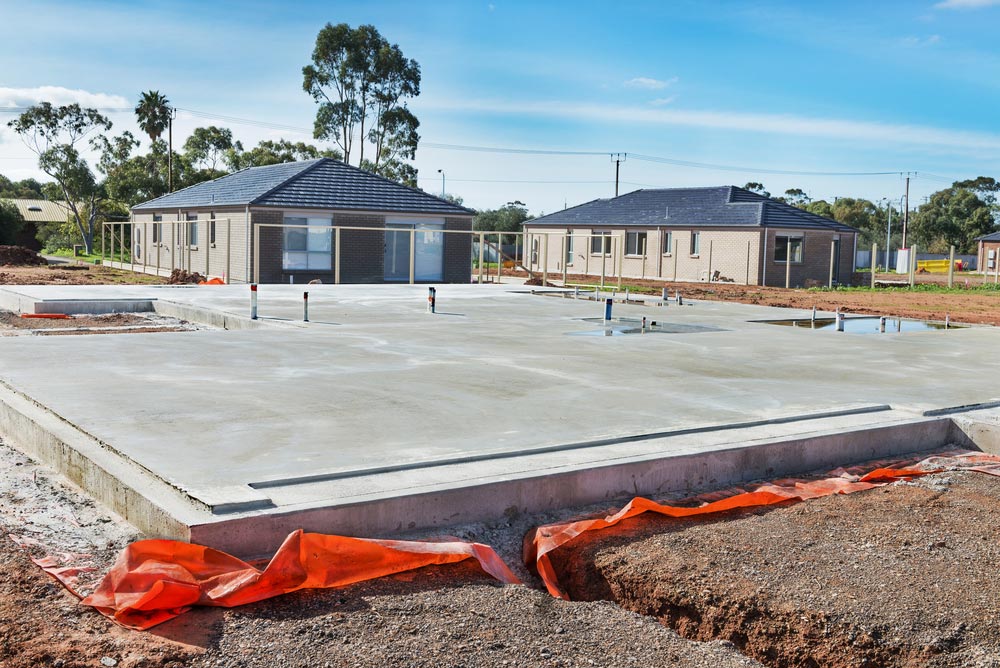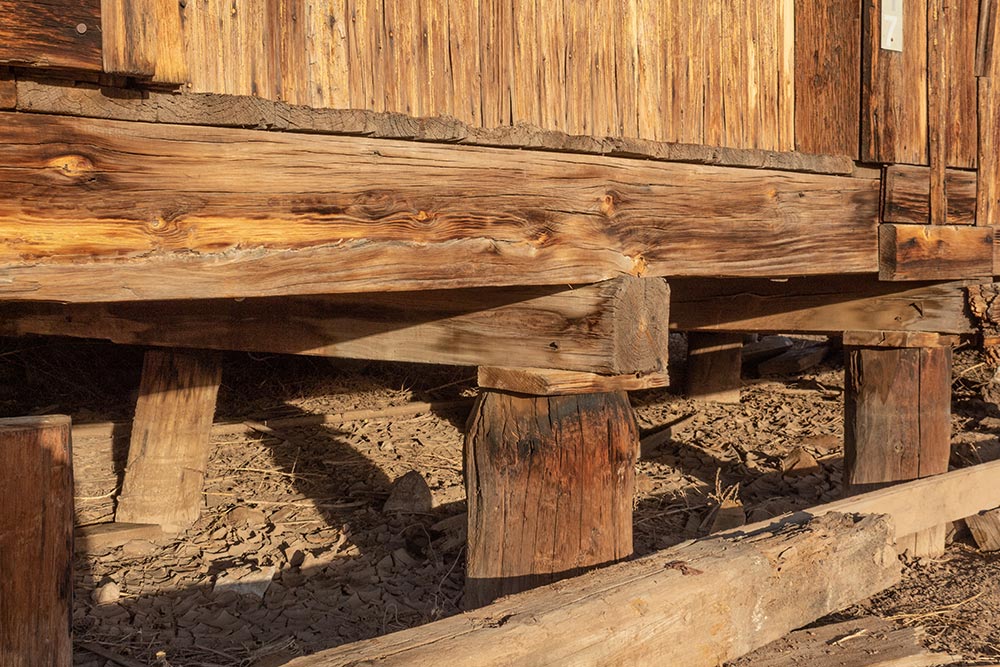If you’re building a house, one of the most important decisions to make is what type of foundation it will sit on. It may seem obvious, but it’s important to emphasize the importance of having a good foundation. It will keep your home stable, even when the ground underneath it starts to shift. It will keep moisture from getting into your home. It will even provide insulation so your home stays comfortable during climactic fluctuations.

The Advantages of a Pier and Beam Foundation
Some of the advantages of a pier and beam foundation include:
- Flood Protection — This is one of the biggest advantages of a pier and beam foundation, because it raises the home off the ground.
- Easily Accessible — The crawlspace under a pier and beam foundation makes it more accessible. So, repairing foundation, electrical, and plumbing issues will be easier.
- Cost-Effectiveness — Because it doesn’t require as much concrete, it will be more cost-effective than a slab foundation.
- More Mobility — A pier and beam foundation will allow you to pick up and move your house (though it’s not always recommended).
- More Flexibility on Uneven Ground —A pier and beam foundation can be cut to varying lengths. So, it can compensate for more uneven surfaces (such as hills or mounds).
- More Airflow — Because it’s raised off the ground, more airflow will be underneath the home.
A pier and beam foundation will give you more flexibility than a slab foundation, which can save a great deal of time and energy on the excavation process.
The Disadvantages of a Pier and Beam Foundation
Despite the advantages of a pier and beam foundation, it also has the following drawbacks:
- Sagging Issues — Because there isn’t anything solid under the structure, the floors are more likely to sag, bounce, and creak.
- Less Support — Because it doesn’t have the support of a concrete slab, it can’t hold as much weight.
- Wood Rot — Because it’s made out of wood, a pier and beam foundation will be more susceptible to rot if it’s exposed to moisture.
- Expensive Repairs — While it offers more accessibility when repairs are necessary, it can also be more expensive because of the amount of needed materials.
- Rain Accumulation — While it may be helpful when it floods, it can also be counterintuitive because of the moisture that gets trapped underneath.
A pier and beam foundation is not the best option if you live in an area that experiences extreme levels of cold or heat. The expansion and contraction that these conditions can cause can lead to cracking and other types of damage.

The Advantages of a Slab Foundation
Here are some of the advantages of a slab foundation:
- Simple Installation — The installation process of a slab foundation is much simpler than a pier and beam foundation, because it doesn’t have as many requirements in terms of materials or labor.
- Low Maintenance — Once a slab foundation has been installed, there’s not a lot that needs to be done with regard to maintenance. A pier and beam foundation needs to be regularly checked for water damage, rot, and a number of other issues.
- More Resale Value — Because it’s considered to be the standard foundation type, it will have a higher resale value than a home with a pier and beam foundation.
- Pest Protection — A slab foundation will give your home more protection from pests than if it had a pier and beam foundation, because there are less cracks and crevices for pests to enter.
A slab foundation isn’t as likely to crack or settle, so it will be more durable than a pier and beam foundation.
The Disadvantages of a Slab Foundation
Despite its advantages, a slab foundation will have the following drawbacks:
- Risk of Cracking — Because it’s made out of concrete (which is a porous material), it will be more likely to experience cracking.
- Lack of Flexibility — A slab foundation doesn’t offer much flexibility, so it will be harder to make any changes to your home after it has been built.
- Poor Drainage — A slab foundation won’t offer much drainage. So if your home experiences a great deal of rain or water infiltration, it can pool around to your foundation (which can cause cracking).
- Less Accessibility — Because it’s a solid foundation, it’s not as accessible. So if you experience any issues, you may need to dig up your entire foundation to fix them.
- Expensive Repairs — Because it’s made of concrete, it can be more expensive to repair any cracking or settling issues.
- Insulation Requirements — A slab foundation will need to be insulated to prevent heat loss, which can be an additional expense you may not have considered.
If you’re looking for one of the best places for foundation repair in Corpus Christi, be sure to reach out to Streem Foundation Repair.
